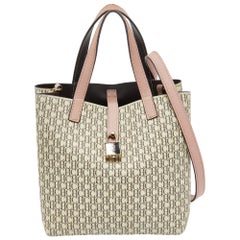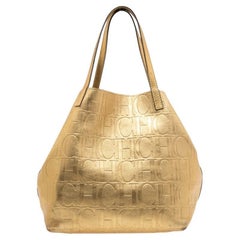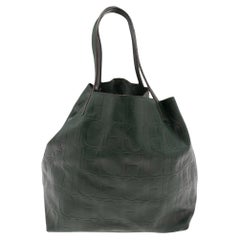Carolina Herrera Matryoshka
2010s Tote Bags
Recent Sales
2010s Spanish Tote Bags
2010s Italian Tote Bags
2010s Italian Tote Bags
2010s Venezuelan Tote Bags
2010s Spanish Tote Bags
2010s Spanish Tote Bags
2010s Spanish Tote Bags
2010s Spanish Tote Bags
2010s Italian Tote Bags
2010s Spanish Tote Bags
2010s Italian Tote Bags
2010s Tote Bags
2010s Italian Tote Bags
2010s Spanish Tote Bags
2010s Italian Tote Bags
2010s Spanish Tote Bags
2010s Italian Bucket Bags and Drawstring Bags
2010s Tote Bags
Carolina Herrera Matryoshka For Sale on 1stDibs
How Much is a Carolina Herrera Matryoshka?
Carolina Herrera for sale on 1stDibs
Born into a family of wealth and sophistication in Caracas, Venezuela, but without a trace of design education, Carolina Herrera launched her eponymous fashion empire in 1981. Modeling her aesthetic on the principles of refined, simple elegance, she has gone on to defy all expectations.
Style, that elusive je ne sais quoi, is often hard-won, acquired over years of experimentation and missteps. Precious few are born with it. Carolina Herrera may well be one of them. And if she wasn’t born with it, she was most assuredly born into it, raised by wealthy and refined women in the most rarefied of circumstances back in Venezuela. Her mother and her grandmother were both perfectly put together, had their own dressmakers — even a live-in seamstress. Everything within Herrera’s reach at home was of the utmost quality. Hers was a privileged life, and no one appreciates that fact more than she.
Herrera brought that aesthetic to her first collection of clothing and accessories in 1981, encouraged by éminence grise Diana Vreeland, then the editor in chief of Vogue. Herrera was initially interested in designing textiles (she worked in a publicity role for Emilio Pucci — the iconic clothing and housewares maker — during the 1960s). It was Vreeland who planted the fashion seed. When it took root, Herrera returned to Caracas, and with the help of Guy Mellier, her personal couturier, she came up with a collection she felt was New York–ready. She never studied fashion and didn’t know how to cut or sew. “What I understood was proportion, and I had a good eye.” She knew not only what looked good on her but also on other women, too.
Herrera unveiled her first collection at the Metropolitan Club on Fifth Avenue. The fashion press was hard on her; “they didn’t have faith,” is how she explains it today. But how about the women in the audience, did they like what they saw? Herrera leans in and says with a smile, “A lot!” The buyers liked the collection, too — enough to place orders. (And they’re still placing orders.)
She quickly became synonymous with sophistication for her glamorous evening dresses, which eventually earned accolades in magazines, prime real estate in Manhattan boutique windows and a heavyweight client roster that included Jacqueline Kennedy Onassis.
As her business has evolved — in 2010 it reached $1 billion in sales — so has Herrera herself. In the 1970s and before she became a designer, she used to dance until the wee hours at Studio 54, pal around with Calvin Klein, Bianca Jagger, Halston and Andy Warhol. Through all the madness — every bit of which she enjoyed — she remained unscathed. No scandals, no gossip, no whispers. She’s been famously photographed by Robert Mapplethorpe, Arthur Elgort, Norman Parkinson, David Seidner, Mario Testino, Bruce Weber and, yes, Ron Galella. (“I’ve never said no to the paparazzi,” she explains. “I smile, let them take the picture and move on.”)
Find a collection of vintage Carolina Herrera shoes, shirts, day dresses, handbags and more on 1stDibs.
Finding the Right Tote-bags for You
From classic medium-sized Louis Vuitton leather tote bags to authentic cube-like Loewe shoulder bags woven in raffia, the large selection of vintage and designer tote bags on 1stDibs offers something for special occasions as well as everyday needs.
Although part of a modern look, tote bags have been roomy and versatile accessories since at least 1944, with the launch of L.L.Bean’s “ice bag.” The Maine retailer, then largely known for rugged field coats and hunting shoes, had introduced a big, durable canvas bag that was initially intended to carry firewood or ice. In those days, to keep produce and other foods cool in refrigerators, consumers had to regularly replace the blocks of ice that were doing all the work in their bulky appliances. There was no better bag to help haul big blocks of ice from the trunk of your car to your front door and, subsequently, to your kitchen.
Years later, during the 1960s, L.L.Bean’s Boat and Tote was introduced as an overhauled structured canvas version of the ice bag. Tested to lug up to 500 pounds, the Boat and Tote became a best seller. Also during the 1960s, American designer Bonnie Cashin created the Cashin Carry for Coach. Cashin was Coach’s first lead designer, and she liked leather, large pockets and earth tones. Her modern interpretation of the tote bag introduced a touch of elegance to this increasingly ubiquitous accessory.
In the subsequent decades, more brands debuted their own iterations of the tote bag, from Tory Burch’s Perry leather tote bag to Goyard’s luxurious Saint Louis.
Pay tribute to this long and interesting history of a well-loved accessory by browsing the vintage and designer tote bags on 1stDibs.


